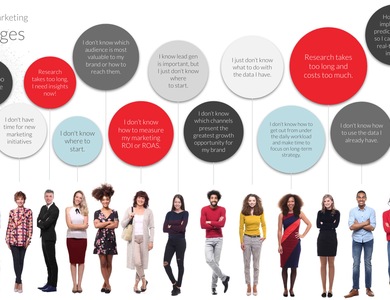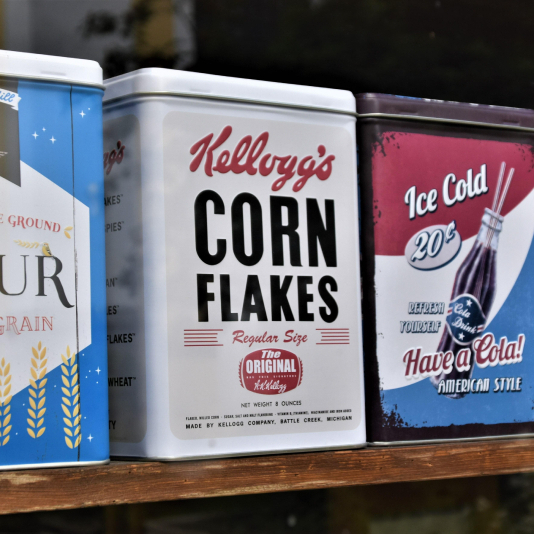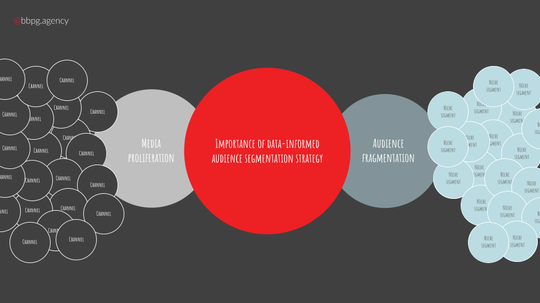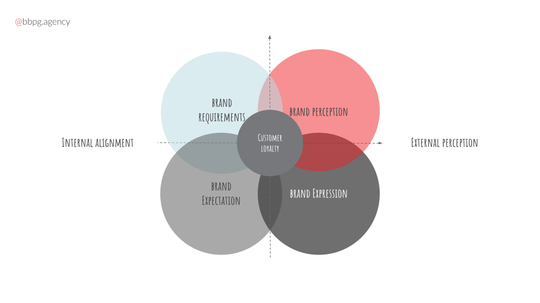
7 Marketing Fails and Reason Why
As a brand, you want to ensure that your marketing strategy is effective and impactful. To do this, you must avoid the biggest mistakes that can hinder your success.
Read MoreThe marketing landscape has radically changed in the past decade, yet many brands are staying the course and keeping the status quo. Media proliferation has exploded and made channel and go-to-market strategies incredibly complex. Audiences are moving into smaller and smaller fragmented communities, which makes it harder and harder for brands to reach them.
Consumer habits and expectations for what a brand really should be have radically changed.
Brand loyalty has changed. Data is everywhere, but how do brands know what data they should use, and for what?
Brands have two paths: Embrace the race to commoditization and become a price comparison in the eyes of the consumer. Or understand that consumers’ fundamental wants and needs from brands have been upended, and embrace the opportunity that a values-driven approach can bring.
Amazon-ization or building a customer and values-centric approach.
How is your brand positioned to make that decision?

Key takeaway:
Businesses that are able to pivot from one distribution model to multiple are the ones that are able to adapt and maintain or increase marketshare.
Many businesses still operate as if the landscape hasn’t drastically and radically changed in the last couple decades—or even in the last one to five years. Many businesses still operate from the notion that because their product is in demand, the market will bend to them and their supply will be valuable, without any or much effort on their part.
In reality, the revolutionary changes that have happened in the B2B space in the past year should spur every business to focus 100% on how to deliver their product through a direct to consumer approach.
Now that might be generalizing go-to-market, channel, and distribution strategies, especially with the supply chain mess we’re in, but the fact of the matter is: going DTC has little to no risk (and a relatively low investment cost) for a business, whereas the reward can be nothing but transformative.
In the consumer landscape, e-commerce has evolved by 10 years in less than a year. Businesses are catching on, but not all categories, verticals, or industries. Some are taking a bit longer to catch on.
Some B2B companies are having a rough go of adapting to a marketplace that has seen major disruption in the key account buying cycle.
Businesses that have been driven by products and sales are having a more difficult time adapting to this new market reality—a new opportunity toward which more agile, more nimble businesses are running with no hesitation.
The businesses that are able to increase market share and pivot from one distribution model to multiple are the ones that understand the importance of marketing.
Now, I know what you’re thinking: “You’re a marketer. This is incredibly self-serving.” And you’re absolutely right. It is. But it’s also the truth. And I’ll tell you why.
One of the main contributors to brand growth in the current landscape is a brand’s willingness to aggressively, consistently, and precisely intersect their brand messaging on the right channel, to the right audience segment, with the right message, at the right time, with overlapping ownable values.
If a brand can:
Then that is the brand best positioned for growth and success.
How did we get here?
Key takeaway:
Consumers want brands that care and communicate intimately, directly, and on the channels that they prefer. Any other approach is a direct path to decreased brand viability, affinity, and equity.
It’s no secret that the communication, messaging, and advertising landscape has changed in the past twenty years. It, too, has changed radically. Twenty years ago, Facebook didn’t exist. Today, social media is one of the main channels of distribution and communication for brands globally.
Traditional media has been incredibly slow to adapt and traditional marketing has slowly been phased out for the more measurable and attributable options that some digital advertising channels offer.
Marketers used to have it easy.
We created a campaign, we took a top-down approach to broadcasting that campaign message, and the audience consumed the brand impressions on a few monopolized channels.
That’s all changed.
There are hundreds, even thousands, of different (digital) channels that can be activated. There are tactics and strategies that continually evolve.
We used to be able to just create a radio spot, a couple of billboards, take out a magazine ad, and run a TV ad, and the majority of the country would be immersed in our brand messaging.
Today, I can choose specifically what type of device I want to deliver my ads on. And to what age group. And based on their interests, what instances of my brand they’ve already engaged with (visiting a landing page or product detail page, add-to-cart abandonment, liked an ad, etc.), and what they’ve purchased, what their AOV is, and what their lifetime value is.
One marketing platform alone, Facebook, boasts over 5,000 attributes (data points) to use in targeting.
Media proliferation has made go-to-market strategies incredibly complex for brands. Prioritizing your channels based on opportunity is a complex, strategic, and data-informed proposition that not all brands are equipped to answer.
And to make matters even more difficult, the fragmentation of audiences over the past 10 years has led to added complexities in audience targeting. Consumers are continually searching for like-minded people to congregate with, in smaller and smaller online communities. Niche communities are cropping up everywhere.
And marketers must contend with not only the increasingly difficult task of prioritizing channels, but also with the added complexity of prioritizing their “customer” into audience groups, those groups into segments, and those segments into personalized strategies that must then be prioritized by opportunity, reach, and brand impact.
Most brands aren’t equipped to communicate to and target multiple audience segments on multiple channels. Well, some brands, like YETI, Spoonflower, and King Arthur Baking, are great examples of what it means to take a values-driven approach to connect with audiences. But the majority of brands are treating the marketplace like they did five, 10, and even 20 years ago.
Going to market is a different proposition today. Yet brands continue to use traditional top-down tactics that don’t perform, aren’t efficacious, and to which consumers aren’t responding.
Consumers (we humans) want brands that care. Brands that matter. Brands that value the same things that matter to them. Brands that communicate intimately, directly, and on the channels that they prefer.
Any other approach is an approach that isn’t even keeping the status quo. It’s a direct approach to decreased brand viability, affinity, and equity.

Key takeaway:
COVID-19 has accelerated the necessity for brands to distribute DTC and has forced them to reconsider their point of sale engagements with customers.
COVID-19 hit our business landscape like a freight train run amok, and for many, it was time to adapt or become obsolete. Many adapted, albeit slowly, and embraced e-commerce, DTC models, curbside pickup, delivery service, and other creative options that have increased the custom-centricity of how brands engage with consumers at the point of purchase.
Savvy brands realized that consumer expectations have shifted and have tried to shift with them. Brands that have fixed distribution channels and go-to-market channel strategies have been at a gross disadvantage since 2020.
We will continue to see, and live through, the fallout of these changed consumer expectations and how they will disrupt verticals and create new opportunities for flexible, dynamic, and adaptive brands.
Brands that give consumers options will thrive. Brands that stick with limited options for purchase and point-of-sale engagements will decline in validity and affinity. They will be swimming upstream in a marketplace that is rapidly changing and where the pace of new go-to-market opportunities is gaining speed.

Key takeaway:
Consumers don’t have a shorter attention spans, they have quicker bullshit detectors.
One of the fundamental changes in the marketing landscape is the increased level of content being created, curated, and distributed today as compared to five, 10, and 20 years ago.
The brands that are thriving have clear channel strategies and an integrated marketing approach, and they function more like agile publishing companies than traditional marketing teams.
Marketers have been publicly denouncing that consumers see over 10,000 brand impressions per day, and even if that number may be a bit inflated, we can all agree that content saturation is a major consideration for brands’ relevance and resonance.
Even though we, the consumers, are constantly connected to social media and other online platforms, we’re so inundated with content, ads, dark patterns, and poorly executed UX elements, that we are going “blind” to certain impressions.
This requires marketers to be more precise, focus on quality over quantity, and make sure that they have a holistic and integrated marketing and content creation strategy that focuses on reaching prioritized audience segments, on their preferred channel(s), with the right message (for where they are in their buying journey), and at the optimal time for their consumption preferences.
Sounds like an almost impossible scenario. Multichannel strategy can be a complex proposition, but prioritizing your audience groups and segments (based on the greatest opportunity for your brand) and prioritizing channels (based on audience segment usage) are no longer things that are “nice to have” for a brand, but instead they are the “minimum viable product” for an integrated, precise, and efficient marketing approach.
Today’s access to data has enabled and empowered brands to pave their path through data-informed decision-making, which adds clarity, precision, and a tangibility of efficacy and attribution measurement.
Bottom line is that we, the consumers, don’t have a shorter attention span, we just have a quicker bullshit detector. And if you’re selling bullshit, most of today’s savvy consumers (generalizing, but Gen Z, Y, and young Gen Xers/Xennials have a fairly high media literacy rate) can sniff out inauthenticity, whitewashing, greenwashing, pinkwashing, really any type of facetious washing that brands without core beliefs and values try to put past us.
Key takeaway:
Amazon built its entire model on a loss leader growth revenue approach with the sole objective to engulf and disrupt brands.
Amazon was launched as an online bookstore.
This is part of my imprint of this behemoth that grew into a conglomerate during my formative years. It’s still a gross juxtaposition in my mind.
As for my children? They know Amazon as a marketplace, or rather, a product search engine, where they can find everything. And although we’re doing our best to wean ourselves from the ecosystem that this BIG entity has spawned, just when I thought I was out, they pull me back in, with a new Rundle-feature or product category disruption (health insurance is next).
Amazon built its entire model on a loss leader growth revenue approach with the sole objective to engulf and disrupt brands and verticals. Amazon eschews profits, instead focusing on disruption and market share gains, and they base this strategy off two of the most important purchase drivers that consumers consider:
The third leg of the purchase driver stool: quality? Not so much. And you really only need to innovate in one of these to be relevant and carve out a niche. Amazon owns these two brand and product purchasing drivers and is slowly, directly and indirectly, disrupting new categories on a consistent and continual basis.
We are watching and hypothesizing what a potential future holds for Amazon. The possibility of regulation is inching closer. When you own the platform, the rules, the algorithm, the regulators, and the marketplace, you are almost the literal definition of a market disruptive monopoly.
So, we’ll see if Amazon will continue to deliver. (sorry, not sorry)
Key takeaway:
Amazon-ization has led to a marketplace where product differentiation is of little importance. This is an irrefutable fact. We, as consumers, have shifted how we compare and consider product purchases.
And if the new reality in the marketplace isn’t to differentiate by product, then what else do brands have to do in order to make lasting impressions?
As mentioned before, price, convenience, and customer service are all drivers and can be used by brands as building blocks to build longevity, sustainability, and differentiation.
However, these are things that ANY brand can emulate.
Zappo’s was one of the first brands out there to take the current customer service model and completely upend the landscape, thus changing customer behavior and perception of how brands should position customer service.
Amazon, again, introduced two-day shipping, which ultimately led to a complete shift in consumer expectations where we, today’s consumer, expect free delivery within a day or two.
TOMS created a completely new category by introducing the consumer to charitable giving as a value add.
Stitch Fix introduced a personalization engine that led to a subscription model revolution, all based on the brand experience of solving for convenience.
These are just a few examples of the new reality that brands need to contend with.
Consumer expectations have shifted, and if your brand is still stuck in the status quo of the early 2000s, then your brand will continue to slide further into decline. When your brand’s distribution model is not adaptive, your distribution will become less and less effective over time.
Key takeaway:
Consumers want brands to stand for something, support causes, and be vocal on their position.
Brands are living, breathing, emotive things, because they’re run and operated by humans. Brands are the reflection of the internal policies, processes, mission, values, and vision that is externalised by the brand’s expression.
Thus, how a brand expresses itself is of utmost importance. Now more so than ever.
Value-, mission-, and purpose-driven branding all have one thing in common: They intersect the brand’s internal mission and beliefs with the values of your customers. When consumers believe in the values that a brand externalizes through precise and consistent messaging, brand equity, affinity, and loyalty are built.
Because it’s not only purchase preferences and consumption preferences that have changed for the consumer, but the way we look at brands has changed as well.
We, the consumers, now want our brands to stand for something. We want our brands to support causes. We want our brands to be vocal.
This is now a new requirement that brands must contend with. A new development in the brand landscape.
And with so many new drivers, shifts, and trends, how can brands stay on top of all this complex evolution?

It’s harder to reach your customers because of the fragmentation of audiences.
It’s harder and more costly to use media to get the word out about your brand and product due to the proliferation of media.
It’s harder to make an impression because of the enormous amount of content being created daily.
It’s harder to figure out what data matters to your brand because there is so much data to access.
It’s harder to deliver brand experiences because consumer perception, expectations, and habits have changed.
It’s harder to build lifetime value because brand loyalty is changing.
It’s harder to differentiate your brand based on your product because of the rapid speed to market and the globalization of the marketplace.
It’s all harder.
But brands have to start somewhere. And that start is to look inward and, with precision and data, identify internal brand requirements and expectations and externalize them in a way that aligns and overlaps with what is important to the brand’s customers—their beliefs and values.
When that has been identified, your brand positioning has been refined, and you’re ready to express your values externally. That’s when the real growth will happen.
If you don’t know where to begin, give us a call and we can talk about our Brand Values ID framework.

As a brand, you want to ensure that your marketing strategy is effective and impactful. To do this, you must avoid the biggest mistakes that can hinder your success.
Read More
ROI and ROAS are two commonly used metrics in marketing to measure the effectiveness and efficiency of marketing campaigns.
Read More
For many B2B companies, pivoting to a DTC model offers a more sustainable future, but if you’re considering making the leap, here are a few questions to answer first.
Read More